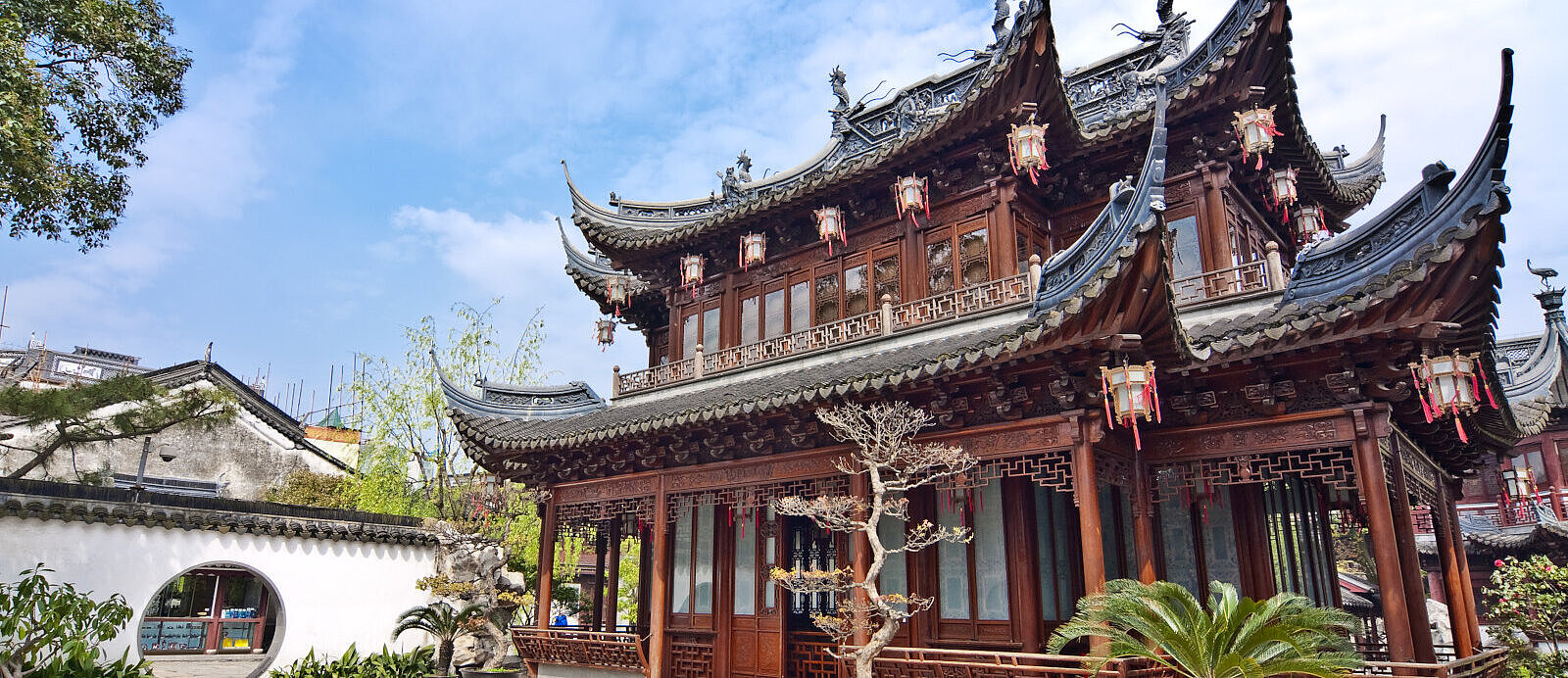
Old New Territory China
A network of green bridges can be an attractive option for many metropolitan areas in China to create a culturally fascinating world of innovation in the middle of the cities: Autonomously driving traffic on the innovation bridges can relieve traffic on the road, the urban greenery on the bridges can improve the urban climate, especially in summer, as well as shading the dark wide streets - and housing for various target groups can be created close to the city center. In some of the buildings, special educational opportunities, wellness offers or cultural-artistic development opportunities etc. can become an enrichment for the entire respective city population and tourism.
Chinese metropolises have excellent prerequisites for creating innovation bridges along the lines of the Frankfurt Bridges
Major Chinese cities have grown rapidly in recent decades and have had to build correspondingly large multi-lane transport routes through the cities to meet the traffic and infrastructure challenges:
1.Large grey streets criss-cross the cities like aisles. The space above them could be built over and used for housing as well as for commercial, health or even educational facilities.
●
2.China is one of the leading countries in the development of AI systems and could introduce large, complex autonomous driving systems on the innovation bridges that can massively relieve traffic on the roads and reduce the number of vehicles. Once such a system is successfully introduced, it can eventually be applied to the road traffic of entire cities.
●
3.Due to massive sealing, flooding occurs in many cities during the rainy seasons. Accordingly, China is a leader in the development of Sponge City concepts. Chinese Innovation Bridges can collect rainwater, transport it further to storage locations with pipes that hang below them or are integrated, and - if required - also distribute it back into the city from there. This makes them an excellent addition to Chinese Sponge City concepts for a metropolis.
●
4.In China, roof greening and façade greening are being massively promoted: Liuzhou Forrest City is the most prominent example of this trend. The Chinese Innovation Bridges are intended for comprehensive greening, both in terms of the columns and the bridge body as well as buildings standing on them.
For any city in China, the Frankfurt Bridges concept could be an interesting option
Feasibility studies would first have to examine whether the bridge concept could make a positive contribution to any of China's cities and what peculiarities would have to be taken into account per city. The challenges for the cities are very different in terms of energy, water balance, housing requirements and transport connections, as can be seen from the exemplary route proposals for Shanghai and Beijing, which are over 1,200 km apart and have completely different conditions, accordingly.


Like all strongly grown metropolises worldwide, Shanghai is also crisscrossed by large wide streets with dense traffic.
Beijing is not different - only an insider could distinguish the images in their bleak uniformity. China has a dozen cities with more than nine million inhabitants, and all of them have traffic roads that are gray, wide, and impassable. Even though traffic has improved in recent years and has been successfully mitigated by the government, the sealed road surfaces still remain as aisles separating parts of cities.
Traffic may have become more bearable with the promotion of e-cars and the construction of bike highlines - but the dark sealed infrastructure of huge roads remains for the time being.
On the Chinese Innvotion Bridges, autonomously driving traffic could emerge, both with public transport and semi-individualized by calling a car via app. This would relieve the road traffic under the bridges.
And since the Innovation Bridges in China - unlike in Frankfurt - would be extraordinarily wide, bike lanes could be added to the right and left of the proprietary lanes for autonomous traffic.
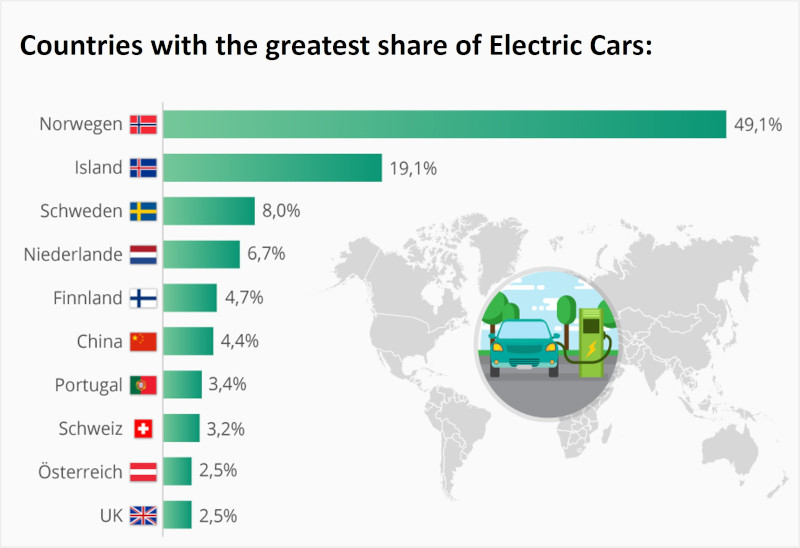
The innovation bridges can collect rainwater with their own surface - but also rainwater from adjacent large buildings can be forwarded via the bridges.
In Shanghai, for example, around 1.1 cubic meters of precipitation fall per year, so that the bridge area of around 2.8 million square meters receives almost 3 million cubic meters of rainwater. Of this, up to 20% can seep away, a further 10% is likely to evaporate, but 70% must and can be passed on to water reservoirs outside the city or even treated there to make drinking water.




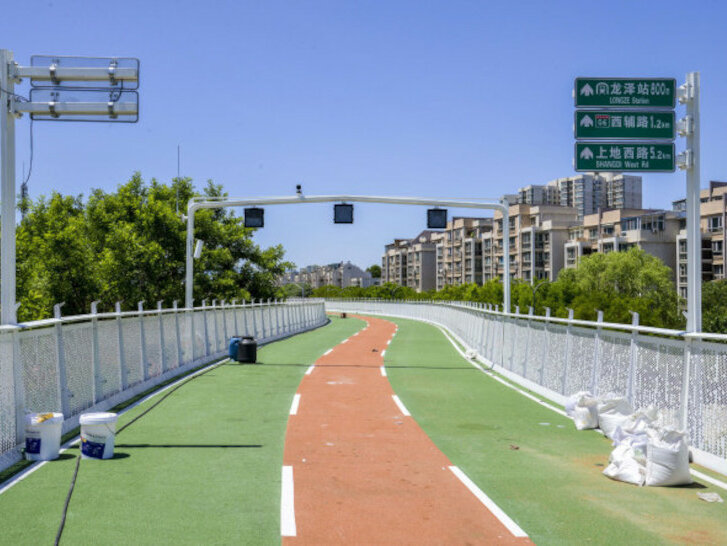
China massively promotes greening concepts for buildings - on the innovation bridges, all sustainable greening approaches could be developed further
LEED certifications are growing rapidly in China. However, as it is a new field, there is still much to be explored. Some greening projects have encountered problems for which solutions need to be developed in the future.



In Chengdu in the Qiyi City Forest Garden, the facade greening has attracted droves of insects – the Chinese Innovation Bridges can be used to research how this problem can be countered with natural predators, for example
Creativity and inquiring minds are required here, because the predators -for example songbirds- can also become a nuisance. A mixture of measures is probably the most sensible solution, up to the planting of carnivorous plants that cannot become a nuisance.
In addition, the sustainability of massively planted facades must be continuously improved: The additional cost of concrete to support tree planting must be in reasonable proportion to the climatic benefits of the "vertical forest".


Furthermore, a low-plastic irrigation system can be developed on the Chinese Innovation Bridges and can be transferred from there to green roofs, buildings and facades, in a way so that microplastics are not washed out with every rain after the first signs of wear
Like their counterparts in Frankfurt, the Shanghai Bridges for example have plastic-free underfloor irrigation, as well. Plastic hoses are only increasingly used on slopes where, for certain reasons, clay pipes cannot be used instead.

Depending on the city, suitable partial aspects of the bridge concept can be realized. However, one thing is true for all cities in China: there is beautiful traditional architecture in their regions, which can be revived on the respective bridges
The challenge - just as on the Frankfurt Bridges - is to equip the buildings technically with modern living comfort and to build them in an energetically contemporary way, but at the same time to apply traditional architecture and to design the buildings in an artisan way.
Often, ventilation and shading systems of traditional buildings are also particularly cleverly adapted to the climatic conditions of the respective region. It is important to explore what can be learned or adopted from this traditional "building technology" in order to optimise houses in terms of indoor climate and energy consumption.


Moreover, the concept of the Frankfurt Bridges does not seem strange, because built bridges are not a novelty in China
Building on bridges is a tradition in China: Many bridges are not simply used to cross rivers, but are covered to give walkers the opportunity to linger. Some are even built on in such a way that there can be shops or restaurants there, while others, like the Chengyang Bridge in Guangxi, are used by the inhabitants of the two villages it connects as a marketplace where they can sell their handicrafts.



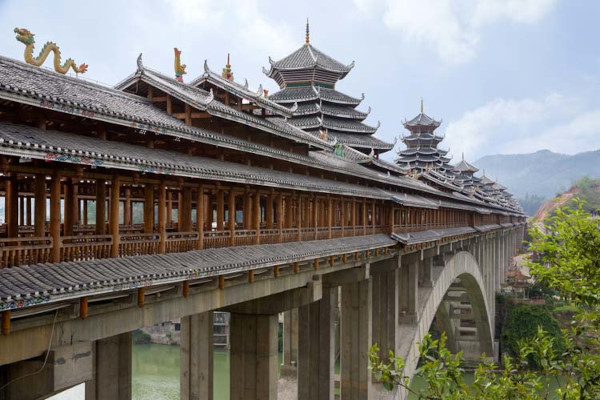


Life takes place on all of China's built bridges - they are more than just a traffic route
Only a few years ago, a bridge was built in Chongqing on which both houses with Western and Chinese architecture were built: Similar to the Frankfurt Bridges, here -to the delight of the tourists- diversity was implemented: You can stroll past the most diverse shops, and there is always something going on on the bridge.



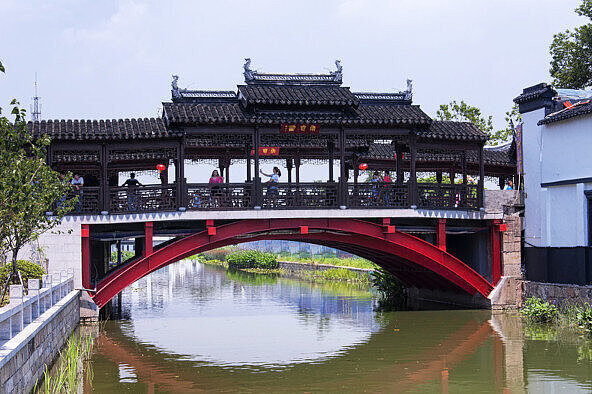


Which architecture prevails on the artful innovation bridges should depend on the location of the respective metropolis
If an innovation bridge is being built in Shanghai or one of the other more southerly metropolises, it makes sense to pick up on the local characteristics of the respective city and ist surrounding region. Accordingly, for the "Shanghai Bridges" buildings with architecture from the southern provinces are planned.



The shikumen, typical for Shanghai, should not be missing on the innovation bridges in a southern metropolis


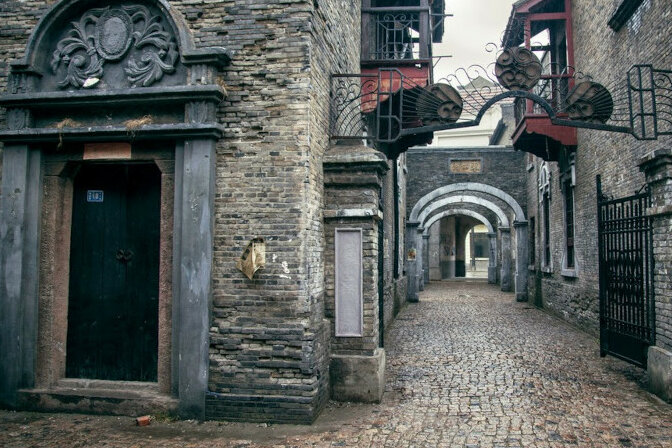

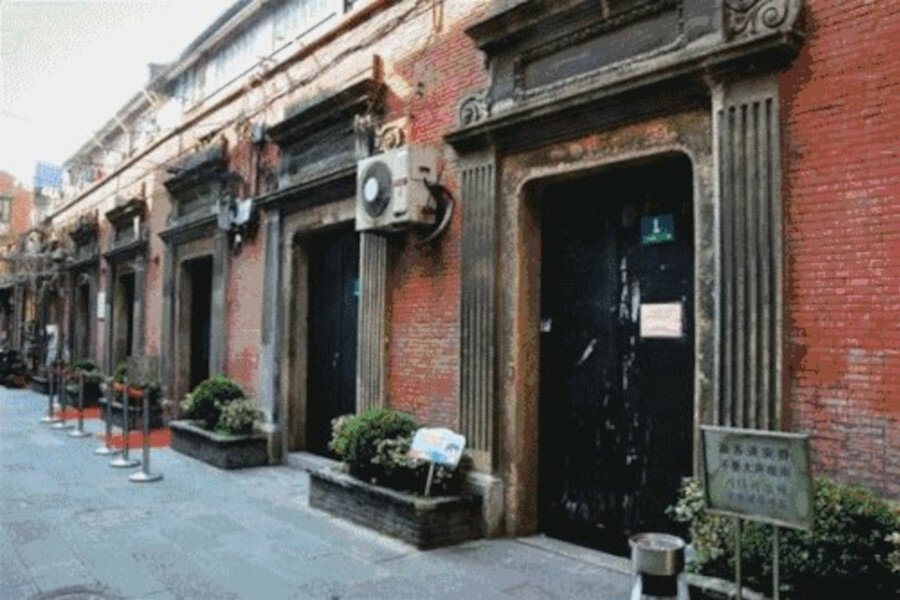
But there is not only one traditional architectural style per bridge, but different architectural styles of the surrounding regions can be represented in different sections of the bridges.
In Shanghai, for example, traditional buildings from other southern provinces may also be located on the bridges.

In the south of China, many cities are built on water canals
Probably the most famous example is Suzhou, but many other cities also have terraced waterfront developments. No deep canals are planned on the Chinese Innovation Bridges, though; but shallow, aerated bodies of water are planned which can provide fresh air and architecturally create the fantastic mirror effects that are also familiar from the waterways of southern China.


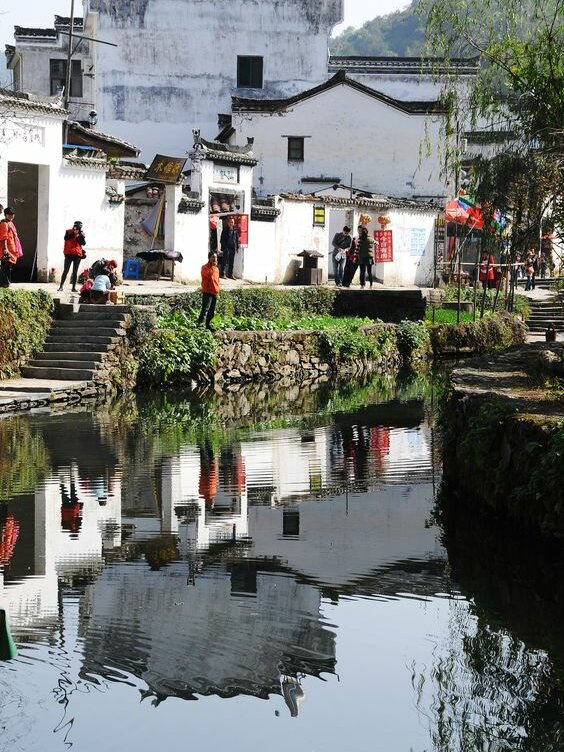




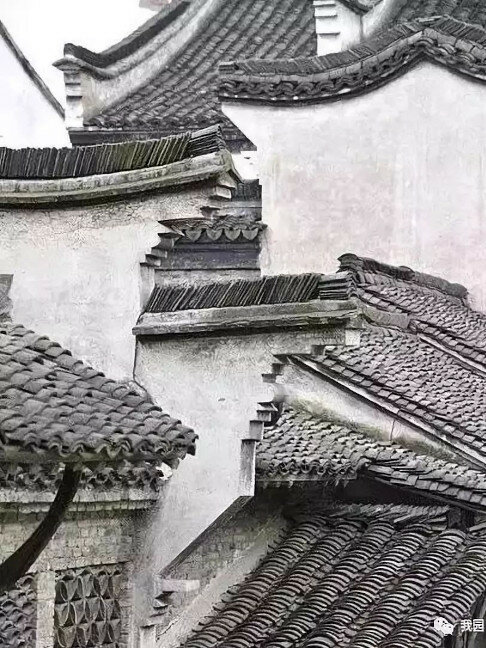
There should also be water channels on the Shanghai bridges with southern architecture
Even though the channels should be very shallow so as not to put too much water load on the bridges, they can still be cooling and aesthetically enhancing.
In addition, they structure the neighbourhood and can, for example, provide a clear demarcation between commercial areas and residential buildings.
A certain gradient can also be used to ensure that the canals act as a water collection channel for the bridges in the event of rain, and transport the water across the bridges to storage locations. Since the innovation bridges have "smart city" structures, meteorological advance warning can be used during rainfall to ensure that some of the water is drained from the canals so that they have catchment capacity for the rain and do not overflow.
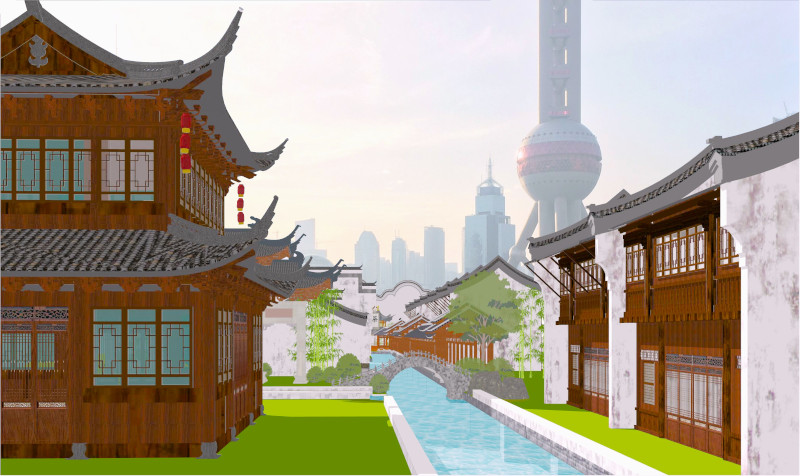

You can't row on the canals of the innovation bridges, but you can use the mirror effects of the water, for example at the so-called "moon bridges







Not only can local architecture be featured on the Innovation Bridges in Shanghai, but visitors can also admire the extraordinarily beautiful traditional architecture of other southern regions of China there.


The typical roof gables of southern China can also be found on the Shanghai bridges, as can the bright white walls, which are particularly popular in Anhui province
Deliberately leaving the walls of houses plain, smooth and white is not new to modern architecture: In China, this stylistic concept has been used for centuries, especially in the South in the Anhui province.
There was also quite excellent craftsmanship there, so the walls did not remain white for lack of master craftsmen. Rather, the philosophy behind it was that the viewer should not be limited in his imagination by being given a decorative façade. The viewer should have the freedom to imagine anything possible on the white wall - one could create one's own façade, so to speak, or what takes place on it.


Combining architecture and philosophy on the Shanghai bridges
The concept of white walls comes from a compositional method of Chinese painting. The motto there is "leave empty" and assumes that an empty space in the picture leaves room for imagination.
This technique aims at creating "EVERYTHING" out of "NOTHING" - an important part of the philosophical discourse in Daoism.
This philosophy can be found in various Chinese traditions, not only in painting or architecture, but also in music and literature.
By reflecting on traditional Chinese architecture, Chinese thought and cultural heritage is also revived on the Shanghai Bridges, which represent an important foundation for the people and correspond to the worldwide bridge concept of bringing humane architecture back into the middle of the cities through Innovation Bridges.



Thanks to the greening concept of the Frankfurt Bridges, which works sparingly with underfloor irrigation, the fascinating garden and park tradition of China can also be unfolded on the Innovation Bridges with great attention to detail.

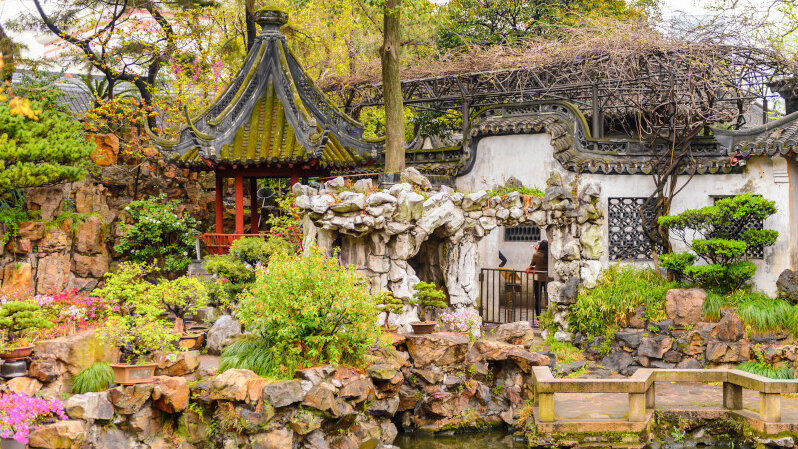
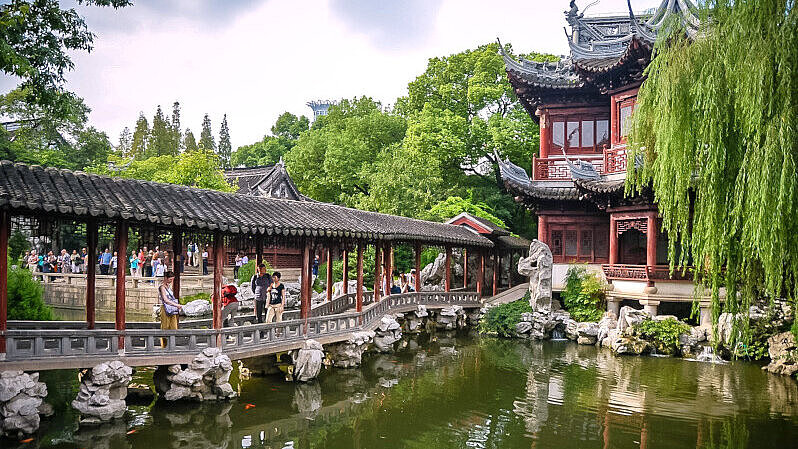

The irrigation system on the Shanghai Bridges not only provides beautiful greenery and gardens on the bridges, but also waters the trees and plants along the bridges

In the North, metropolises can also cross their city with Innovation Bridges: Architecture in northern China works with different materials and stylistic elements


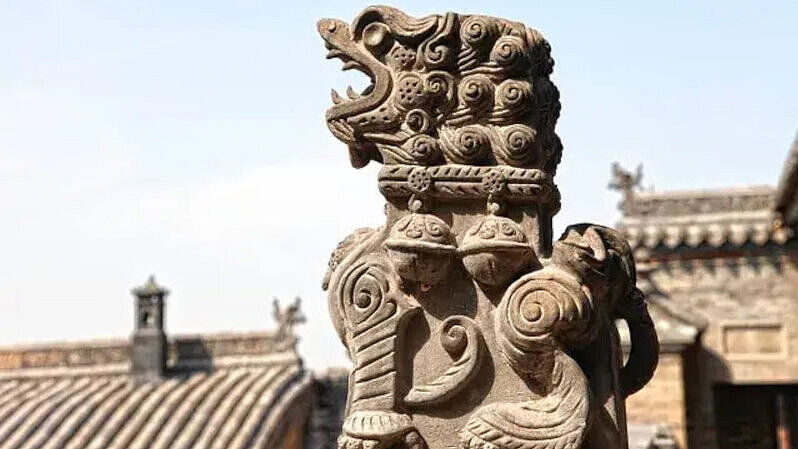
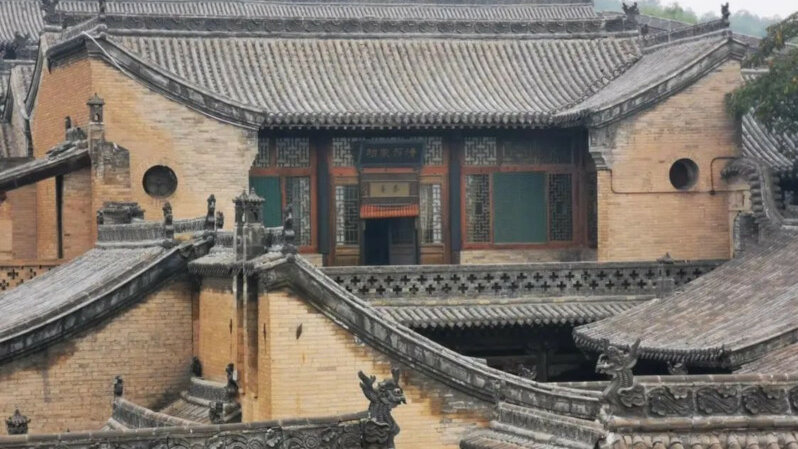
In northern China, other roof shapes and layouts can be found: For example, four houses around a courtyard - the so-called "Siheyuan" - are typical




The traditional pale grey stone is often brightened up by elements in a vibrant red - the colour of happiness in China



The discreet and at the same time strong colouring results in a very special elegance, which is particularly humane and pleasant due to loving handicraft details.



You can also find colourful roofs - especially in the north.



However, such splendidly colored roofs are usually reserved for palaces and temples



In China, as in most rich countries, traditional architecture is a luxury item
An estate in Suzhou on a private island has been rebuilt in the traditional style and sold for over $150 million - a price that a comparably sized modern-built property (without any arts and crafts) would hardly achieve.


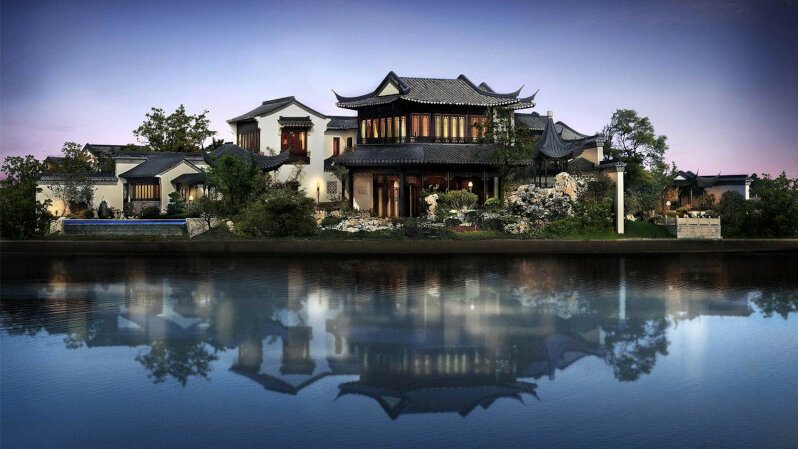

The luxury property is kept in traditional architecture both in terms of the arrangement of the buildings and in terms of detailed art and design.



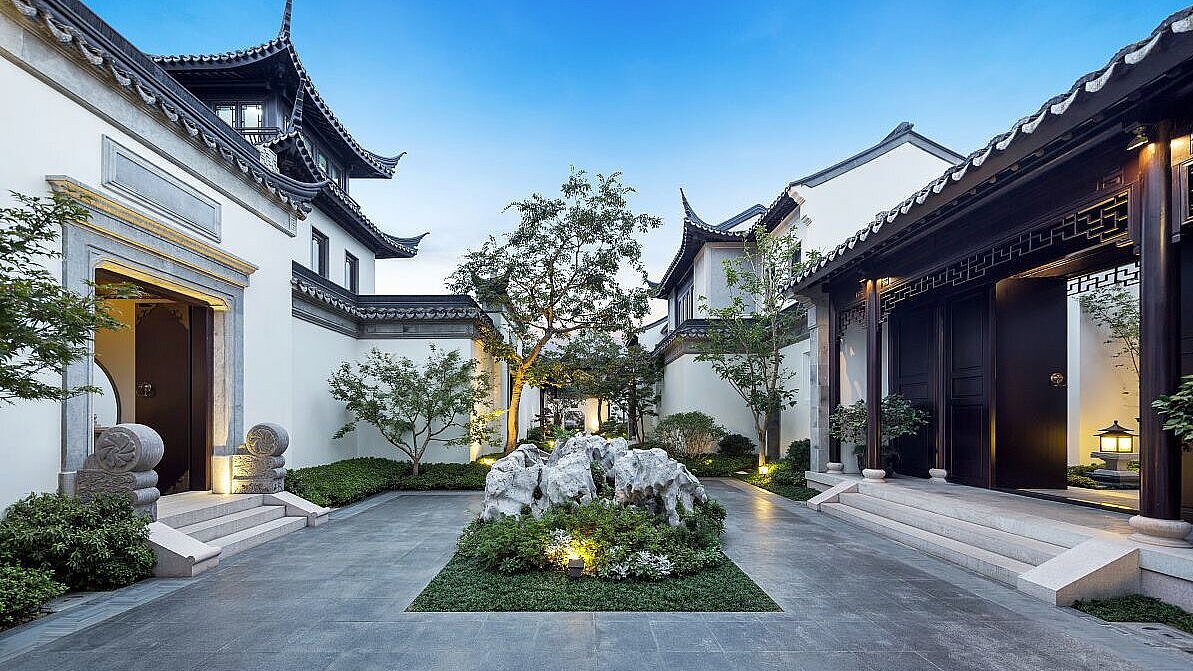




The popular "moon gate", which is a tradition throughout China, is also not missing from the luxury new building with its handcrafted design




The unique traditional wooden ornaments on windows and balcony doors provide transparent shading and pleasant privacy even in modern life
Wood is a sustainable building material that has a rich tradition in China's arts and crafts. Durable cedar wood in particular meets all modern demands for sustainability.
The rediscovery of wood crafts in China can become a modern or contemporary application of its own cultural roots on the Chinese Innovation Bridges.

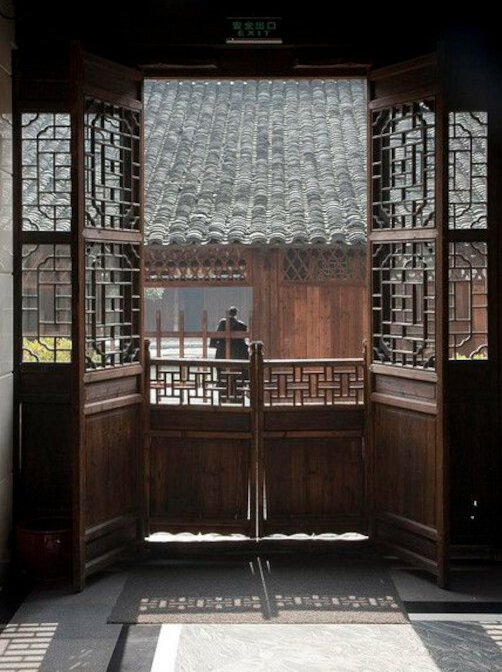

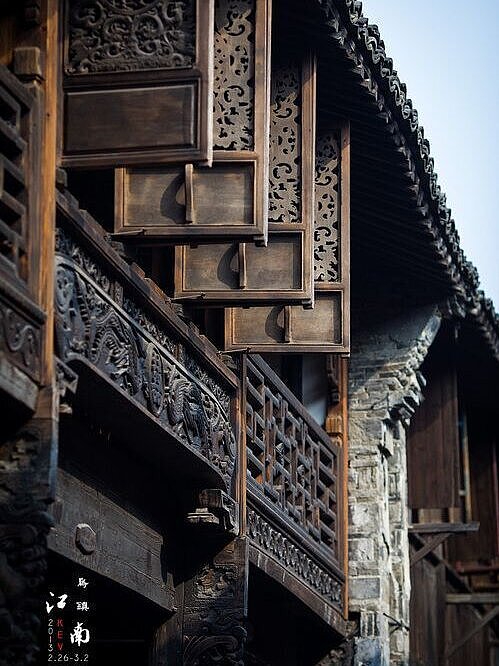
In addition to traditional construction and sustainability, buildings on Shanghai bridges must also consider maximizing building space
As with most old buildings, the popular old buildings in the Chinese architectural tradition are usually only two or three stories high. However, there were also traditional building styles that were designed with four floors to accommodate as many people as possible in one building: For example, the Hakka Tulou buildings in Fujian are an architecture that creates comparatively many accommodations in a small space.


With a surface area of around 3 million square metres, the Shanghai bridges only provide living space for around 160,000 people.
Shanghai is home to 26 million people - 160,000 bridge dwellers therefore make up less than one percent of the population.
Accordingly, the bridges cannot solve the housing problem in the Chinese megacities, as they might in European cities, for exampel.
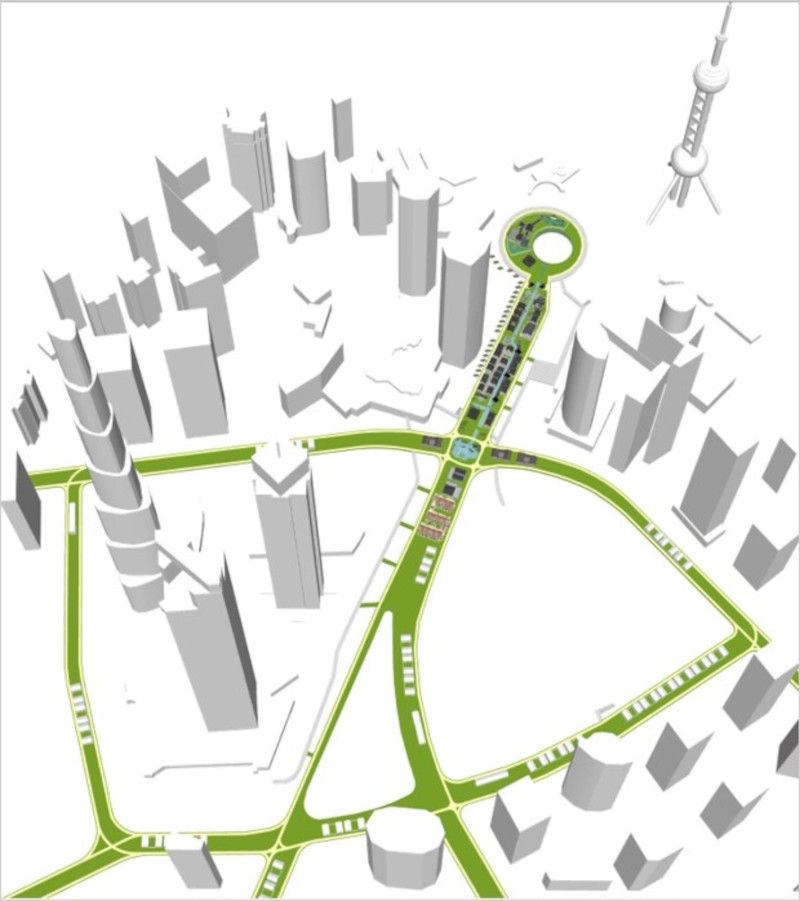
This raises the question: Who will be allowed to live in these beautiful, sustainable and technically advanced quarters?
The 5 million square meters of building space that can be created on the Shanghai Bridges are not only intended to serve residential purposes, but are also intended as mixed quarters in which specific target groups live and in which specific businesses can be found:
One neighbourhood, for example, could be reserved for families who have a child or family member with a disability. Accordingly, there would be more toddlers‘ day nurseries and schools with inclusion character in the neighbourhood, which are completely barrier-free. There should be then also a barrier-free swimming pool that is open to all, but where people with walking disabilities or blind people can also easily find their way around. The playgrounds in the neighbourhood would be also particularly well equipped with inclusive play equipment.
Another quarter could offer more small shops with Chinese medicine from all parts of the country. Renowned acupuncture specialists, traditional massage etc. should be represented there, as well as herb gardens and traditional tea houses. In this quarter, in addition to the traders themselves, retirees could be preferred tenants, but also families who have been socially engaged and can show special merits such as years of community service or volunteer work, etc., could receive living space in this quarter.
Animal lovers could also get their money's worth: In a smaller neighbourhood there could be veterinarians, animal shelters from which you can adopt animals, animal welfare associations and a petting zoo. Apartments here would for example go to employees of research institutes, environmental and water offices, biological and botanical departments of the university and the like.
The range of possible quarters is very long; in Shanghai, up to 100 quarters could be defined in this way, each with 50,000 square meters of building space. Any city that opts for Innovation Bridges can use this approach to develop its own neighborhood landscape. With the building spaces on the bridges, a city can not only try to address its current problems and challenges, but can also present ist tradition in a neighborhood solution, thus creating fascinating attractions for its population and also for tourists.
Conclusion: Innovation Bridges can help large cities in China to overcome challenges related to transport, water management, urban climate and decentralized energy generation and storage.
At the same time, they represent an enormous cultural enrichment in the middle of the city through their promotion of traditional architecture and arts and crafts.
